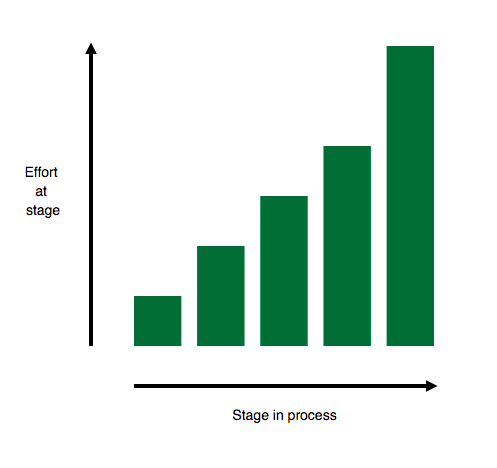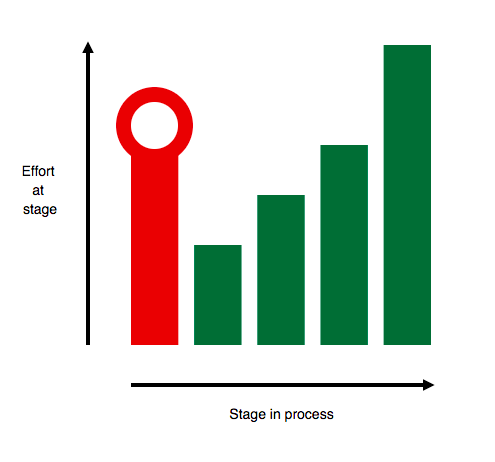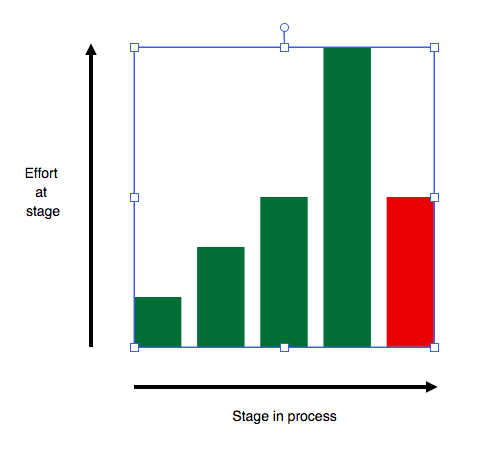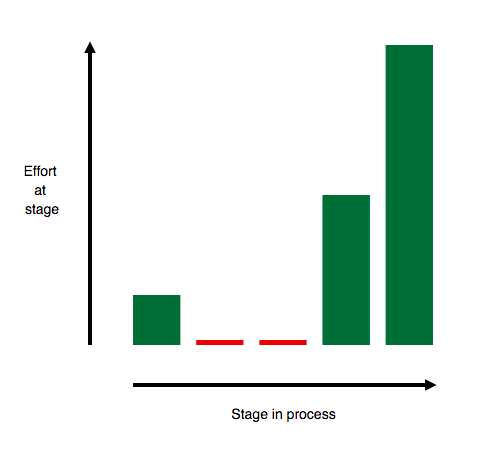Latest news about Bitcoin and all cryptocurrencies. Your daily crypto news habit.
 Photo Credit: Bruno Nascimento on Unsplash
Photo Credit: Bruno Nascimento on Unsplash
If you’re a founder or manager, one of the highest-leverage activities you can conduct is hiring, and in our competitive market, it’s just not something you can afford to screw up.
A common model for recruiting processes is the recruiting funnel. From a company’s perspective, if you look at how candidates progress through the recruiting process, things resemble a funnel. At the wide top of the funnel are candidates that have just applied or that you have reached out to. At the (narrow) bottom of the funnel are the candidates you hire. The funnel gets narrower because in between the different stages, candidates can exit the funnel — either because they aren’t interested in moving forward in your process, or because you don’t think they are a good fit.
Much has been written about funnel design — how to move candidates forward, how to measure your progress, etc. It’s a great model. But the funnel model is company-centric. I’d like to propose a model that looks at things from the candidate’s perspective. I call this the candidate climb.
The Candidate Climb
At a high-level, the Candidate Climb is similar to the funnel in that it looks at the different stages a candidate goes through with a company to ultimately assess fit. The main difference is that rather than look at the volume of candidates in each stage, the Candidate Climb looks at the time and effort expended at each stage (by the company or by the candidate).
A typical climb might look like:
- Candidate applies to a job role (low effort).
- Company screens resume (low effort): Often, resumes are screened in a few minutes (or seconds!)
- Initial chat (medium effort): A 30–60-minute phone call between the candidate and someone at the company.
- Technical phone screen (medium effort): The candidate conducts an hour-long technical interview over the phone.
- Onsite interview (high effort): The candidate goes onsite for a day of interviews at the company.
After that, there might still be a few steps: the company might run some reference checks, make a decision, and then extend and negotiate an offer. But if you look at the main stages and the effort required, it looks like a “climb”.
What are some characteristics of a good climb? I believe they are:
- Increasing effort: The candidate and the company expend less effort earlier in the process and only increase their effort as they gain confidence that there might be a fit.
- Balanced effort: The increase in effort is balanced between the company and the candidate. Neither is asked to unilaterally undertake any large investment.
I realize that sounds a little general, so I’ll illustrate with some common anti-patterns I’ve seen that I believe companies should avoid.
What it is: You ask candidates to “jump through a hoop” at the beginning of the process, requiring them to undertake a task of significant effort (e.g. a project) before your company does.
Why it’s bad: It’s imbalanced. There are a few bad things that might happen. First, the most qualified candidates may just opt-out of your process early on. They’ve probably got other options, so why should they invest time before you do? Second, it’s a pretty bad candidate experience if you have them jump through the hoop, then reject them for an obvious reason that could have been identified much earlier.
When it’s OK: Some companies with a high volume of candidates might be tempted to use this technique, but again, even as a desirable employer, the early hoop jump might cause you to lose the most desirable candidates. In some cases with high volume, you may have candidates that are hard to evaluate — based on their application only, you may have rejected them, but you’d like to give them a chance to demonstrate their skills. In that case, a concrete task early on in the process could be a good idea.
Some companies claim that it filters out candidates that don’t have “commitment”. That can be true later on in the process when you’ve shown commitment as well. But if you ask for commitment early on, you’ll probably only get desperation instead.
The “That Escalated Quickly”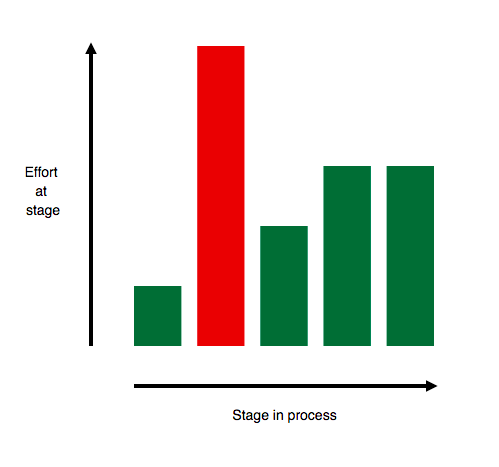 Also known as the middle finger
Also known as the middle finger
What it is: You move to a step that requires a lot of effort very early on in the process. For instance, maybe you bring a candidate onsite without doing any screening beforehand.
Why it’s bad: It’s wasteful of your time and of the candidate’s time. Maybe there’s an obvious reason the candidate and the company aren’t a good fit, but you’ve made a large commitment before either side conducts basic checks.
When it’s OK: Sometimes, you have information with a high degree of confidence that could make other stages redundant. For instance, maybe you’ve worked with that candidate previously, or had interviewed them in the past. Or sometimes, candidates might be on a tight timeline, and it might be worth the risk of skipping some stages.
What it is: You surprise the candidate at the end of the process with a new, unanticipated step — like another day of onsite interviews.
Why it’s bad: Imagine getting to the finish line at a marathon, only to be told that the actual finish line is still a mile further.
When it’s OK: Occasionally, you might realize that at the end of your process, you’re still missing some crucial information about the candidate (or maybe there are bits of information that are contradictory). If it only happens occasionally, it’s not the end of the world. But if there’s a pattern of this happening, your process is probably not well-designed, and you need to figure out how to better capture the signals you need to make a decision before the end of the process.
What it is: The candidate has to wait for a long period of time between two steps in your process. You’re slow to communicate or schedule next steps.
Why it’s bad: In general, the slower your process, the more likely you are to lose candidates. They might lose interest, or they might get swiped up by another company.
When it’s OK: It rarely ever is. As long as you’re not rushing things, not being sloppy, and not pressuring candidates, you should move as fast as you can.
The Candidate Climb is just one way to model your process to avoid a subset of common “missteps”, so this isn’t meant to be exhaustive. There are many different mistakes you can make in your hiring process, so more generally, focus on what your process looks like from the candidate’s experience.
Beyond the Recruiting Funnel: The Candidate Climb was originally published in Hacker Noon on Medium, where people are continuing the conversation by highlighting and responding to this story.
Disclaimer
The views and opinions expressed in this article are solely those of the authors and do not reflect the views of Bitcoin Insider. Every investment and trading move involves risk - this is especially true for cryptocurrencies given their volatility. We strongly advise our readers to conduct their own research when making a decision.
